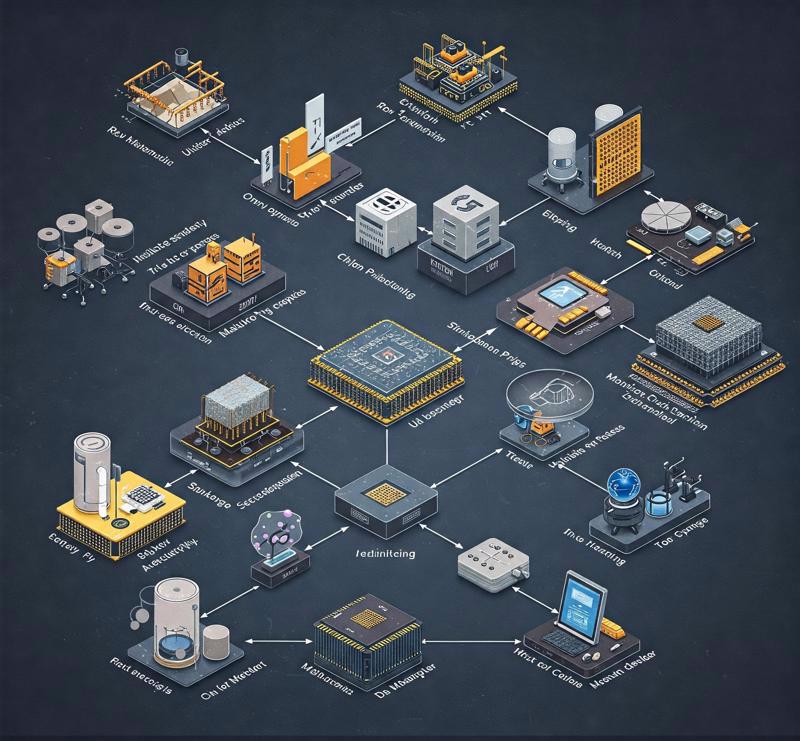What makes you believe that Vietnam is facing a “once-in-a-century” opportunity to “rise” on the global semiconductor value chain map?
I have been engaged in Vietnam’s semiconductor and artificial intelligence (AI) industries for over 12 years since returning to the country in 2013. During this time, Vietnam has made remarkable progress, especially with two major milestones in the past two years.
The first was the upgrade of Vietnam-US relations to a Comprehensive Strategic Partnership in September 2023. The second was the issuance of Resolution No. 57-NQ/TW on December 22, 2024, which focuses on breakthrough development in science, technology, innovation, and national digital transformation, with General Secretary To Lam serving as Head of the Steering Committee.
These two milestones mark Vietnam’s strong transformation in keeping pace with global trends and demonstrate the country’s determination to seize and pursue future development goals.
Looking back 10 years ago, Vietnam’s semiconductor industry had only around 40 companies, primarily engaged in IC design, with about 4,000 engineers. Today, the industry has expanded into packaging and testing, with the participation of major players such as Intel, OnSemi, Hana Micron, and Amkor, increasing the total number of engineers to 6,000.
However, this development still falls short of actual demand. Therefore, Vietnam has set a target of training 30,000 - 50,000 semiconductor engineers in the coming years. In just the past two years, collaboration programs between the government, enterprises, and academic institutions have been significantly promoted and implemented.

Do you think this policy shift has “caught up” with the global semiconductor industry’s growth prospects and the opportunities Vietnam currently has?
Vietnam is facing a “once-in-a-millennium” opportunity to develop its semiconductor industry amid disruptions and shortages in the global supply chain. With advantages such as political stability, a favorable geographic location, an abundant workforce, and strong investment attraction, Vietnam's prospects are highly promising.
The key challenge is how to seize this opportunity and turn potential into reality. Therefore, we need a unified direction and the determination to swiftly implement proposed policies. Over the past two years, we have made significant strides, but progress has not been fast enough, nor have we created the optimal conditions to maximize our potential and fully capitalize on the opportunities ahead.
Along with the policies being implemented, the three high-tech centers—the National Innovation Center (NIC), Saigon High-Tech Park (SHTP), and Da Nang Software Park No. 2—will serve as key starting points for attracting investment in high technology, semiconductors, and AI.
Some leading high-tech enterprises—often referred to as “eagles”—have explored investment opportunities in Vietnam but ultimately opted for other markets. What are your thoughts on this trend?
This is a signal that policy adjustments are needed to attract high-tech investment. Vietnam must implement comprehensive and effective reforms to ensure that projects in the country can operate successfully.
Major multinational corporations are showing interest in Vietnam’s investment environment. However, to attract and secure the success of these investors, comprehensive and effective reforms are necessary.
First, there must be a transparent and attractive investment policy, particularly regarding corporate income tax and personal income tax incentives. Additionally, policies related to employee benefits, such as stock options and stock trading, should be given attention and facilitated. One of the current limitations is foreign exchange regulations, which make it difficult for employees to trade multinational company stocks on international stock exchanges.
Second, infrastructure needs to be upgraded and developed comprehensively, including high-speed internet connectivity, electricity, water supply, and transportation. These are crucial factors for meeting the production and business demands of enterprises.
Third, developing a highly skilled workforce should be a priority. Vietnam is facing a shortage of experienced engineers and senior managers. Therefore, policies to attract talent, including Vietnamese professionals from abroad, should be implemented to fill key positions in multinational corporations and startups.
While progress has been made in workforce training, breakthrough solutions are still needed to meet the growing market demand.
To enhance Vietnam’s investment appeal and mitigate the impact of global minimum tax implementation, the country has adopted a "green lane" policy for attracting high-tech investment and has launched an Investment Support Fund. Do you think these changes are truly appealing to technology investors?
Certainly, these changes will make Vietnam’s investment environment more attractive and competitive in the race to attract high-tech "eagles." For example, Da Nang is currently implementing special mechanisms for strategic investors, including corporate and personal income tax exemptions and reductions. However, while global minimum tax implementation remains uncertain, Vietnam's corporate income tax is still higher than that of neighboring countries.
The introduction of the "green lane" mechanism for investment attraction is also expected to facilitate the transfer of machinery and equipment between subsidiaries within multinational corporations.
Furthermore, as I mentioned earlier, one of the key concerns for technology companies is capital flow and stock transactions of multinational corporations on international exchanges. With recent policy developments, including special mechanisms to attract investment and discussions on establishing a financial center, I hope regulations will become more flexible. In the short term, priority sectors could be granted special policies before expanding to other industries. Additionally, changes in visa policies will be crucial in making it easier for experts to come to Vietnam for work.
The second factor you mentioned in attracting high-tech investment is infrastructure, including electricity, water, and telecommunications. How do you assess Vietnam’s current state in this regard?
Infrastructure remains a challenge for Vietnam in attracting high-tech enterprises. For semiconductor manufacturing businesses, testing and production processes require a stable infrastructure. Even minor power outages can result in losses amounting to hundreds of millions of dollars and disrupt continuous production operations.
Compared to the 1970s and 1980s, when power and water outages were frequent and the internet was nonexistent, Vietnam’s infrastructure has significantly improved. The government has also outlined plans to invest in upgrading and expanding infrastructure to meet the needs of ongoing development.
Major corporations such as FPT and Viettel are working to expand international connectivity to strengthen broadband infrastructure. However, incidents such as undersea cable disruptions, which have occurred in the past, need to be minimized as they can have significant implications for businesses.
Due to the instability of the electricity supply, some industrial parks, export processing zones, and high-tech zones have built their own power plants, but these can only provide short-term solutions. In the long run, Vietnam must develop a modern power system capable of meeting the demands of all businesses, particularly those in the semiconductor industry.
Additionally, ensuring a reliable supply of clean water is crucial for supporting the production needs of enterprises in the future.
Alongside efforts to train 50,000 engineers for the semiconductor industry, Vietnam is also ramping up efforts to attract foreign experts and Vietnamese professionals from around the world to return and contribute to the country’s high-tech sector. As someone who has worked in Vietnam’s semiconductor industry for over a decade, what do you think Vietnam needs to do to attract more talent in this field?
Vietnam has done an excellent job in promoting the semiconductor industry. Universities have also introduced new programs to train students in high-tech fields, providing a strong foundation for Vietnam’s goal of producing 50,000 engineers in the coming years.
However, there remains a significant shortage of senior engineers and managers, which cannot be addressed overnight. Therefore, policies should be put in place to encourage Vietnamese experts abroad to return and contribute to the country. This includes ensuring a high quality of life, offering competitive compensation packages, and providing clear career development opportunities.
You have spent many years studying and working abroad, and returning to Vietnam was undoubtedly a major decision. After 12 years of commitment to Vietnam’s semiconductor industry, if you were to call on Vietnamese semiconductor experts overseas to come back, what would you say?
After 12 years in Vietnam’s semiconductor industry, I can confidently say that the country is taking bold steps toward a promising future. I believe that all Vietnamese professionals around the world share a strong desire to return home and contribute to the nation’s progress. Personally, I have an unshakable belief that Vietnam is where I will dedicate my life and career.









 Google translate
Google translate